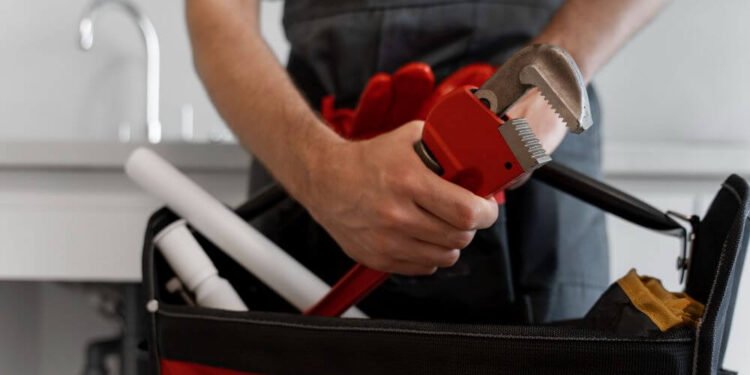Selling a plumbing business isn’t just about handing over the keys and walking away with a check. For many owners, their business represents years of sweat, late nights, and countless emergency calls answered at odd hours. When the time comes to move on—whether it’s to retire, pursue another venture, or simply reclaim your time—you deserve to get the full value of what you’ve built.
The challenge? Too many owners leave money on the table because they don’t plan their exit strategically. This guide breaks down the key steps to maximizing profit when exiting your plumbing business, with insights from industry experts and practical strategies you can put into motion well before listing your business for sale.
Why Proper Exit Planning Matters
Imagine trying to sell your home without repainting the walls, fixing the leaky faucets, or cleaning up the yard. You’d likely attract fewer buyers and lower offers. Selling a plumbing business works the same way. A rushed, unprepared exit often results in undervaluation, buyer skepticism, and long negotiations that favor the buyer instead of you.
By contrast, preparing your business in advance can:
- Boost your company’s market value.
- Reduce perceived risks for buyers.
- Create a smoother transition.
- Secure the highest possible sale price.
In other words, preparation isn’t optional—it’s the difference between an average payout and a rewarding exit.
Step 1: Get a Professional Valuation
The first step in any profitable exit is knowing what your business is worth. While you may have a number in mind, buyers will rely on objective measures. Typically, valuations are based on:
- EBITDA (Earnings Before Interest, Taxes, Depreciation, and Amortization): A standard metric for larger plumbing businesses.
- SDE (Seller’s Discretionary Earnings): More common for small, owner-operated shops. This adjusts net income to reflect owner compensation and discretionary expenses.
- Asset Value: Trucks, equipment, inventory, and even customer databases play into the equation.
- Market Comparisons: What similar plumbing businesses in your region have sold for.
Getting a third-party valuation not only helps you set a fair asking price but also adds credibility when buyers perform due diligence.
Step 2: Strengthen Your Financial Foundation
Buyers are wary of messy books. If your financial records are incomplete or unclear, they’ll assume hidden risks—and lower their offer. Here’s how to prepare:
- Clean up accounting: Ensure accurate profit and loss statements, balance sheets, and tax returns for at least three years.
- Eliminate anomalies: Identify and explain any unusual expenses or income spikes.
- Highlight stability: Demonstrate consistent cash flow and recurring revenue, such as maintenance contracts.
Think of your financials as the business’s resume—neatly presented numbers tell a story of reliability and profitability.
Step 3: Reduce Owner Dependence
One of the biggest red flags for buyers is a plumbing business that can’t function without its owner. If all major decisions, client relationships, and technical expertise rest solely on you, your business becomes less attractive.
Strategies to fix this:
- Train and empower a management team.
- Document standard operating procedures.
- Build systems for scheduling, billing, and customer service.
- Ensure licensed plumbers and technicians can operate independently.
The less critical you are to day-to-day operations, the more valuable (and scalable) your business becomes.
Step 4: Enhance Marketability
Buyers aren’t just purchasing your current earnings—they’re investing in future growth. Position your plumbing business as an attractive opportunity by:
- Diversifying your customer base: Mix residential and commercial accounts. Secure long-term contracts with property managers or HOAs.
- Expanding service lines: Add complementary services like HVAC, water treatment, or eco-friendly installations.
- Boosting online presence: Encourage reviews, optimize your Google Business Profile, and maintain an up-to-date website.
- Showcasing growth potential: Highlight untapped markets or expansion opportunities.
These steps reduce buyer risk while signaling that your business has room to grow.
Step 5: Identify the Right Buyer
Not all buyers are the same. Understanding who might buy your business helps you tailor your pitch.
- Individual Buyers: Often local plumbers or entrepreneurs entering the industry. Typically seek smaller operations.
- Strategic Buyers: Competitors or companies in adjacent services (like HVAC) looking for synergy.
- Private Equity Groups: Interested in larger businesses with proven scalability.
Each type values different aspects—some prioritize strong teams, others recurring revenue streams. Knowing this helps you highlight the right strengths.
Step 6: Negotiate Smartly
The negotiation phase is where preparation pays off. Be ready to discuss:
- Deal structure: Lump sum, installments, or seller financing.
- Transition period: How long you’ll stay on to ease the handover.
- Non-compete agreements: Ensuring you won’t start another plumbing business next door.
Working with an experienced business broker can give you leverage, especially when balancing multiple offers.
Step 7: Plan the Transition
A smooth transition protects the business’s reputation and reassures clients and employees. This may involve:
- Introducing the new owner to key customers.
- Ensuring staff feel secure about their roles.
- Providing training or advisory support for a set period.
A well-executed transition makes the buyer more confident, often allowing you to secure better terms upfront.
Conclusion: Turning Your Plumbing Business into a Profitable Exit
Exiting your plumbing business is one of the most important financial decisions you’ll ever make. By preparing early, strengthening your financials, reducing owner dependency, and positioning your company as a growth-ready opportunity, you can command top dollar and leave on your own terms.
If you’re serious about maximizing profit when exiting your plumbing business, it pays to take a structured, strategic approach. Don’t think of it as just selling your business—think of it as cashing in on years of hard work, the right way.
Pro Tip: Start planning your exit at least 2–3 years before you intend to sell. The earlier you prepare, the more leverage you’ll have when it’s time to negotiate.






